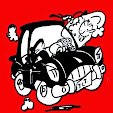Wednesday, 8 February 2017
Review The Bubbly Black Girl Sheds Her Chameleon Skin (Preview)
The Bubbly Black Girl Sheds Her Chameleon Skin
Book, Music & Lyrics by Kirsten Childs
Enclosed By White Picket Fences
http://www.stratfordeast.com/
There's a ghost haunting The Bubbly Black Girl Sheds Her Chameleon Skin. Not as we thought at first, the double-edged spirit of all-black reviews such as Bubbling Brown Sugar or Ain't Misbehavin' that we saw more years ago than we care to remember.
Even the name of our plucky little (and then older) heroine had a connection to the ghost. The Bubbly Black Girl (we won't be repeating the full title over and over again) is a semi-autobiographical coming-of-age musical centred on the ever-optimistic Viveca Stanton as she attempts to follow her dreams.
Viveca is no Little Orphan Annie, even if they may share a particular brand of wearying optimism. This little black girl with braids and white bows, a sunny disposition and, unwittingly, white ambitions, lives a middle class white picket fence life in 1960s' Los Angeles with her Mommy (Sharon Wattis) and Daddy (Trevor A Toussaint).
Indeed bubbly Viveca has "a twinkle in her eye/a bounce in her step/and a have a nice day smile.../both parents in her home/And not a welfare cheque in sight".
Like many a little girl, she starts aspiring to be a ballet dancer - not an easy task for anyone, never mind a little black girl, even now. On top of trying to live her life and compete in California, there is the legacy of the 1963 Alabama church bombings. Not only with the deaths of four little black girls but also the lack of convictions for many years.
This joyous cartoon-like musical with a narrative that zips along is jam-packed with songs. pop, funk, R&B, jazz often filtered through a universe of musicals and sketch scenes, powered out by the four-strong band led by musical director Jordan Li-Smith. With all the performers having great voices, the 10-strong cast, directed by Josette Bushell-Mingo, all have their moments to shine.
An early highlight has a round with Viveca and her blonde talking doll (Jessica Pardoe). But even the beloved doll turns out to have her own pertinent secret. Karis Jack and Sophia MacKay as the young and older Viveca are both vocal power houses, matching the energy and infectious rhythms of the show
The second act had better volume levels at the preview TLT attended and Mykal Rand's choreography comes into its own. Shelley Williams gives a show stopping satirical performance as the pea-popping granny of a New York boyfriend (Ashley Joseph) whose infidelity seems inbued by genetic nurture more than nature
There's a Chorus Line vibe in "I am a dancer" when the young Viveca and her classmates are at the barre. One girl dreams of being away with her "husband-to-be Paul McCartney" while the lone boy (Jay Marsh) is picked for the lead but also longs to leave. Meanwhile dedicated Viveca has to face the reality of casting for a black girl at an early age.
This is bookended by a second act audition scene which mixes Sweet Charity with South Park as director Bob (Matt Dempsey) sends out mixed messages. Being a woman in the business is hard enough, never mind being a black woman.
It's the ghost of Bob Fosse, from Damn Yankees to Chicago, which looms over the show - who did indeed hire the musical's creator Kirsten Childs for his shows. And one of whose early leading roles was in Pal Joey opposite a Scandinavian actress - Viveca Lindfors.
The funky design by Rosa Maggiora gives an abstract quality to The Bubbly Black Girl with huge neon-lit block letters spelling L and A in the first act fronted by other platform levels. Tim Reid's video designs on three screens evoke Los Angeles and then New York "where all the f***ed up people go" in the second act.
There's also no doubt this is a strange and complex one in a genre - the musical - which wouldn't exist as it does without black music and performers. Originally produced in 2000, it varies wildly in tone between a Candide-like innocence, satire and serious social comment.
So it's certainly a psychological slalom. But that's because, it feels to us, it is trying to encompass a world where split personalities are the norm and fact can easily outpace fiction at any time.
Part of this is, we deduce, because Childs chooses to portray life through a sometimes Bell Curve of confused messages from musical theatre and the wider world It's a clever idea but it also proves to be a confusing framework, which perhaps would work better on screen.
In its sketch-like structure, this show has plenty of highlights, often with stronger music than lyrics. Childs has obviously tried to pack in a number of parallel, at times deliberately grating, worlds, entertainment fashions and trends with flashes of anger, insight and plenty of sincerity. It's an amber light for what feels like a pioneering but difficult and flawed musical which TLT is glad to have seen.
Subscribe to:
Post Comments (Atom)





No comments:
Post a Comment